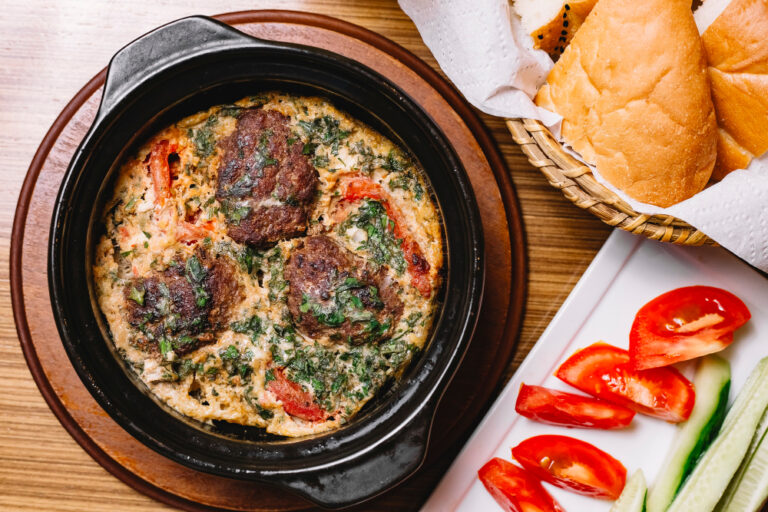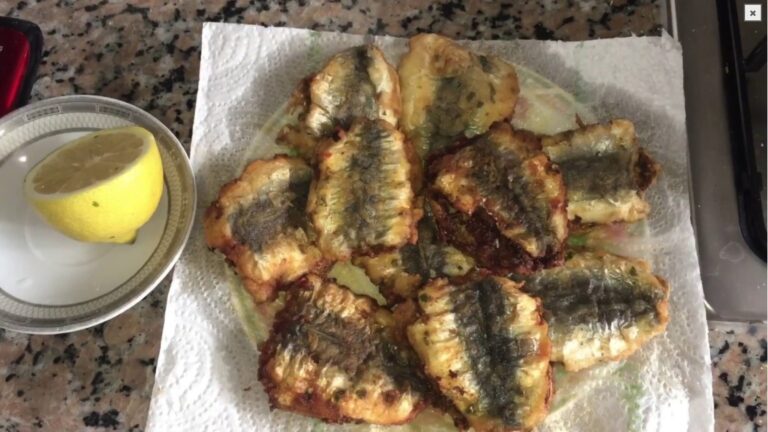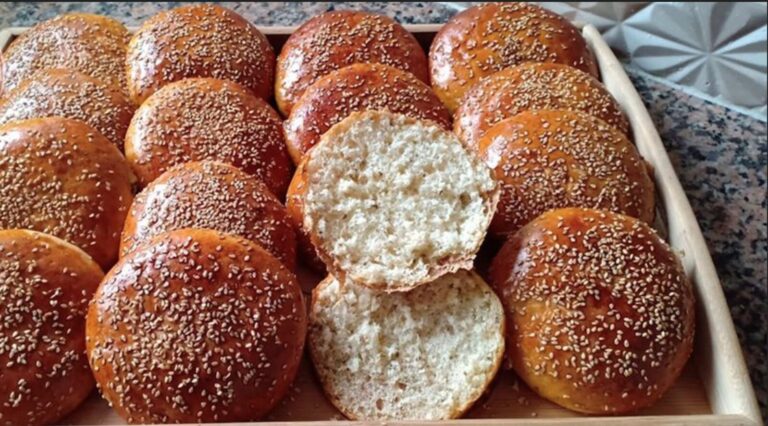
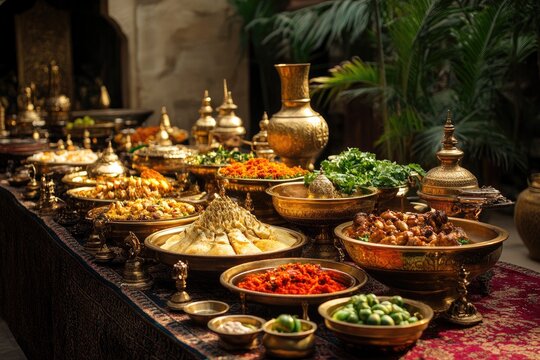
Complete Guide to Moroccan Food Culture: Traditional Cuisine & Culinary Heritage (2025)
Moroccan food culture represents one of the world’s most sophisticated culinary traditions, blending Berber, Arab, Andalusian, and Jewish influences into a harmonious gastronomic symphony. From the aromatic tagines of Marrakech to the delicate pastries of Fez, Morocco’s culinary heritage offers travelers an authentic taste of North African culture that has evolved over centuries.
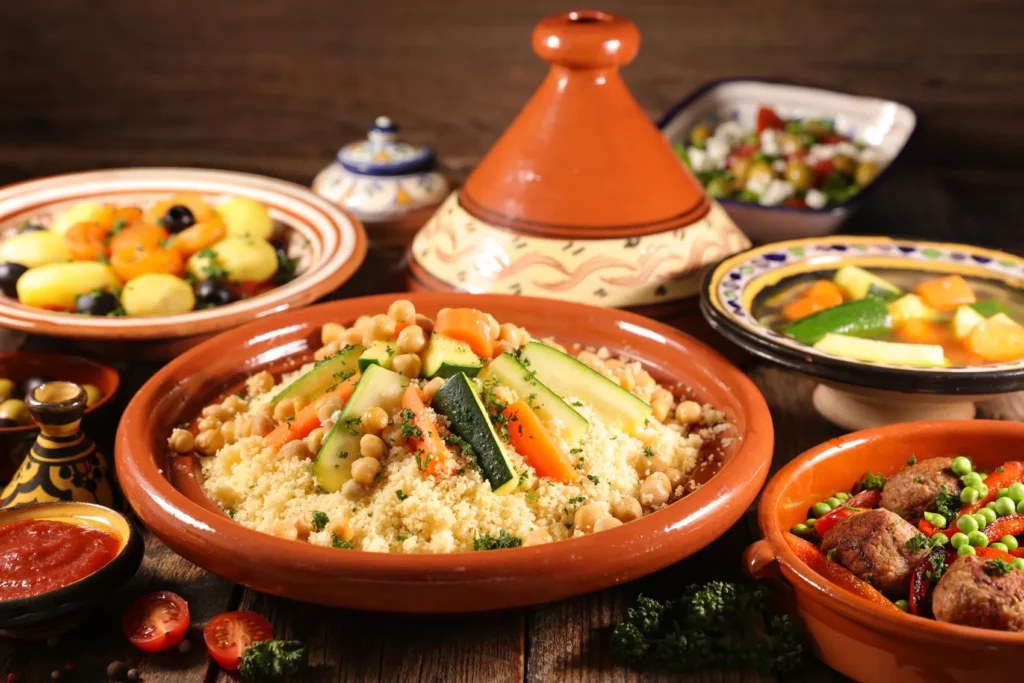
Quick Moroccan Food Culture Overview
| Element | Highlights | Cultural Significance |
|---|---|---|
| Signature Dishes | Tagine, Couscous, Pastilla, Harira | Sacred Friday couscous tradition |
| Essential Spices | Ras el Hanout, Saffron, Cinnamon | Therapeutic and spiritual uses |
| Regional Specialties | Agadir’s Amlou, Fez’s Khliî | Each region tells unique stories |
| Social Customs | Shared meals, Atay tea ceremony | Hospitality and family bonding |
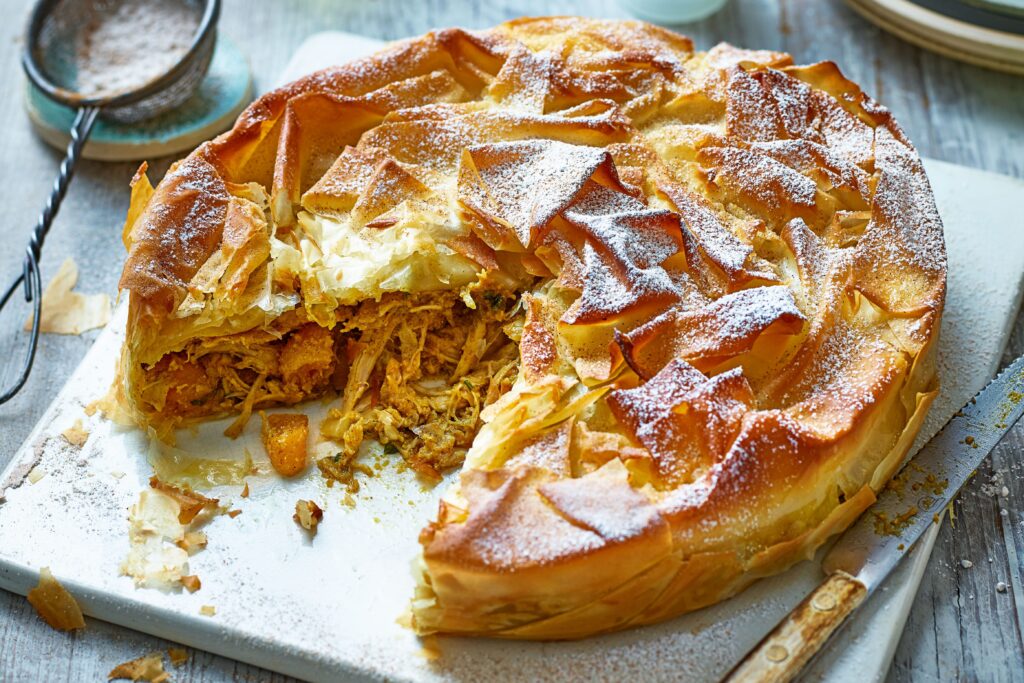
The Rich Heritage of Moroccan Gastronomy
Ancient Culinary Crossroads
Moroccan food culture emerged at the crossroads of Africa, Europe, and the Middle East, creating a unique culinary identity that reflects the kingdom’s rich history. The cuisine beautifully balances sweet and savory elements, with dishes like tagine incorporating dried fruits alongside tender meats and aromatic vegetables.
Historical Influences:
- Berber Foundation: Indigenous cooking techniques using clay pots and preservation methods
- Arab Expansion: Introduction of spices, rice, and complex seasoning blends
- Andalusian Refugees: Sophisticated pastries and sweet-savory combinations
- Jewish Communities: Preserved foods and Sabbath-friendly cooking methods
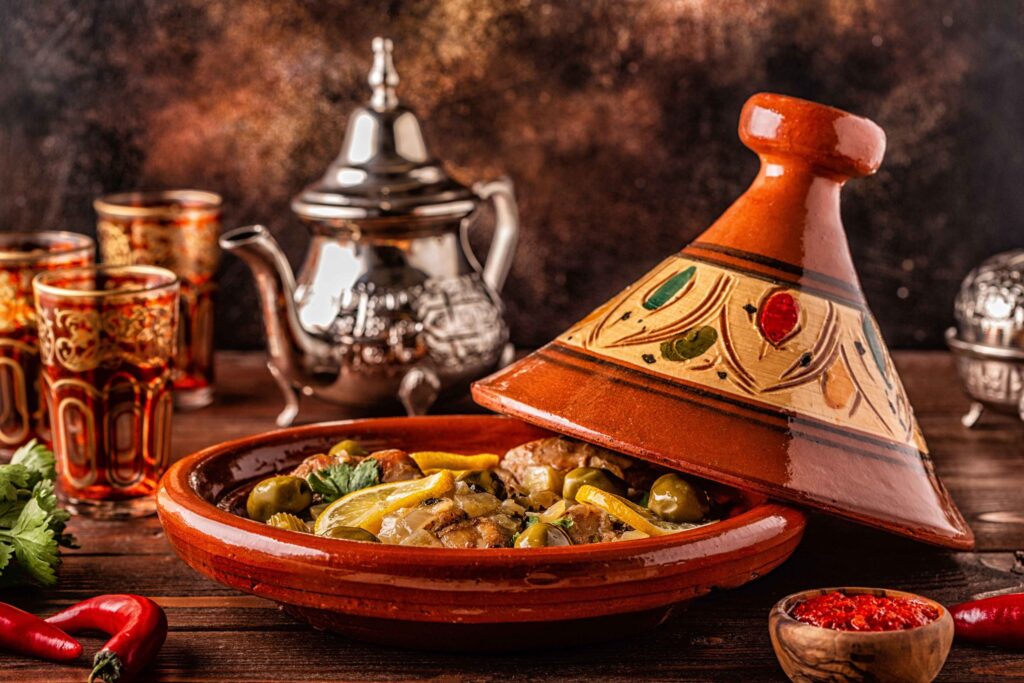
International Recognition
Morocco has established itself as a premier food destination, earning global acclaim for its refined cuisine. In 2014, Morocco was recognized as the second-best gastronomic destination worldwide, while fifteen Moroccan restaurants now rank among the world’s top 1,000 establishments according to La Liste.

Essential Moroccan Dishes Every Traveler Must Try
The Holy Trinity of Moroccan Cuisine
1. Tagine: The Crown Jewel
What Makes It Special: Slow-cooked stews prepared in distinctive cone-shaped clay pots Popular Variations:
- Chicken with preserved lemons and olives
- Lamb with apricots and almonds
- Vegetarian with seasonal vegetables
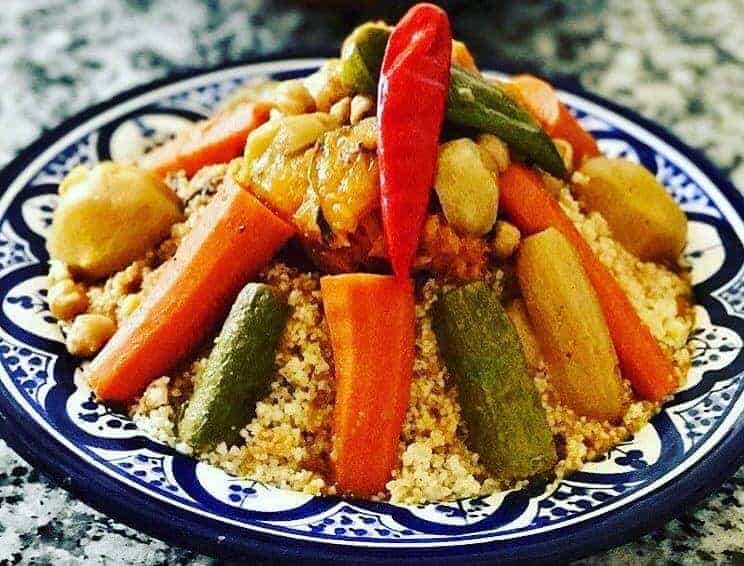
2. Couscous: Friday’s Sacred Meal
Cultural Significance: Traditionally prepared on Fridays as a family gathering dish Regional Styles:
- Fez Style: Seven vegetables with chickpeas
- Marrakech Style: Sweet with cinnamon and raisins
- Coastal Style: With fresh fish and vegetables
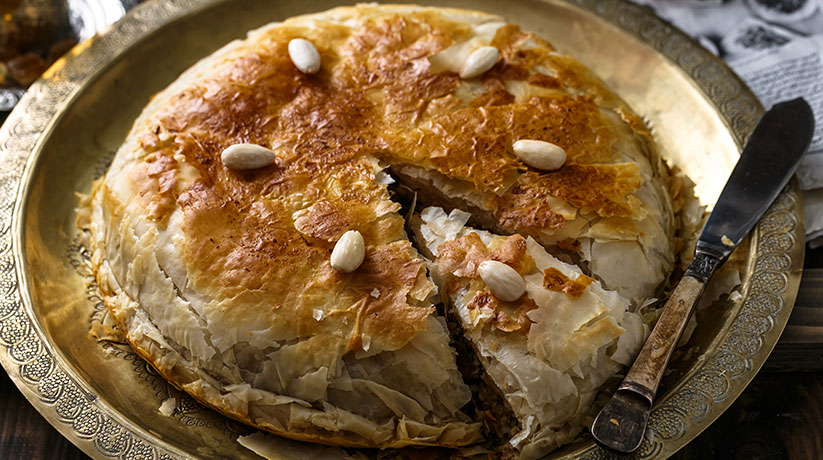
3. Pastilla: The Aristocratic Pie
Description: Delicate phyllo pastry filled with spiced pigeon or chicken, almonds, and eggs Origin: Andalusian influence from medieval times Modern Adaptations: Seafood and vegetarian versions
Hidden Culinary Gems
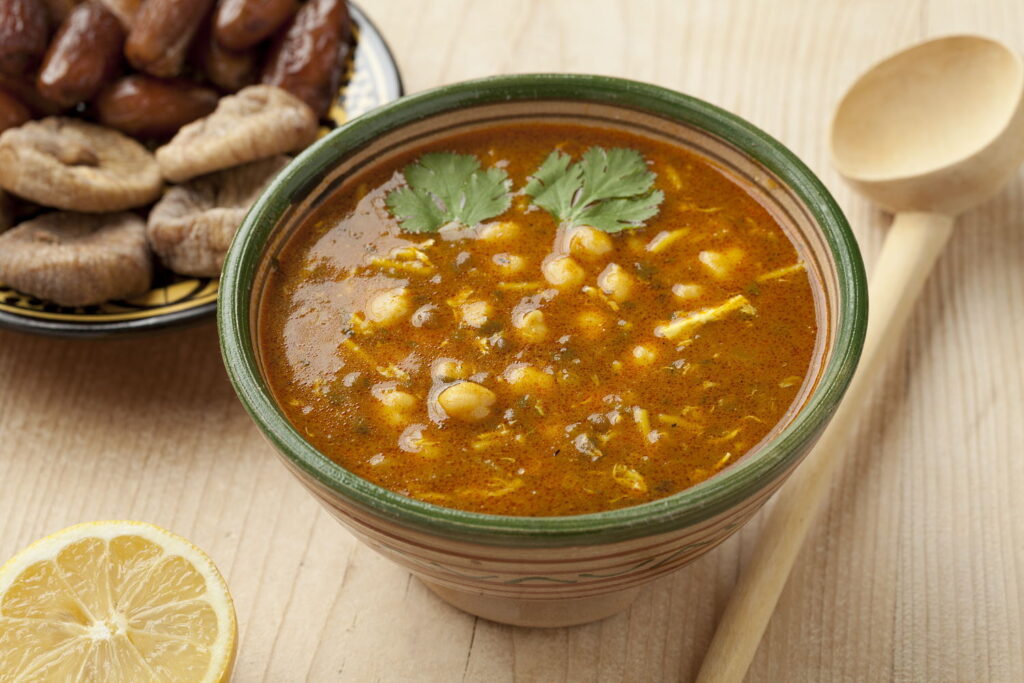
Harira: Morocco’s Soul Soup
- Traditional Use: Breaking Ramadan fasts
- Ingredients: Tomatoes, lentils, chickpeas, fresh herbs
- Cultural Note: Recipe varies by family, passed down generations
Mechoui: Celebration Roast
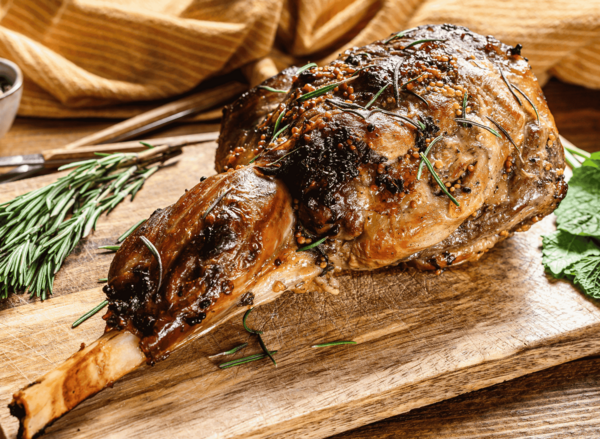
- Preparation: Whole lamb slow-roasted in underground ovens
- Occasions: Weddings, festivals, and special celebrations
- Experience: Often eaten with hands, fostering community
The Art of Moroccan Spices: A Sensory Journey
The Spice Marketplace Experience
Walking through a Moroccan souk reveals a kaleidoscope of colors and aromas that define the country’s culinary identity. The cuisine reflects Morocco’s role as a crossroads of civilizations, with spice blends that balance complex flavors.
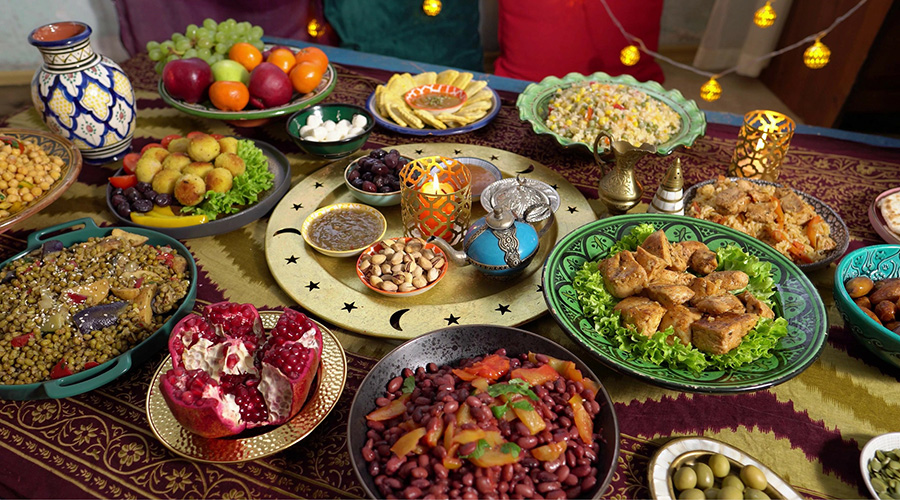
Essential Moroccan Spices
| Spice | Flavor Profile | Common Uses | Health Benefits |
|---|---|---|---|
| Ras el Hanout | Complex, warm, slightly sweet | Tagines, rice dishes | Digestive aid, anti-inflammatory |
| Saffron | Delicate, honey-like | Rice, pastries, tea | Antioxidant, mood enhancer |
| Preserved Lemons | Salty, citrusy, intense | Tagines, salads | Vitamin C, probiotics |
| Harissa | Spicy, smoky, garlicky | Meats, vegetables | Capsaicin benefits, metabolism boost |
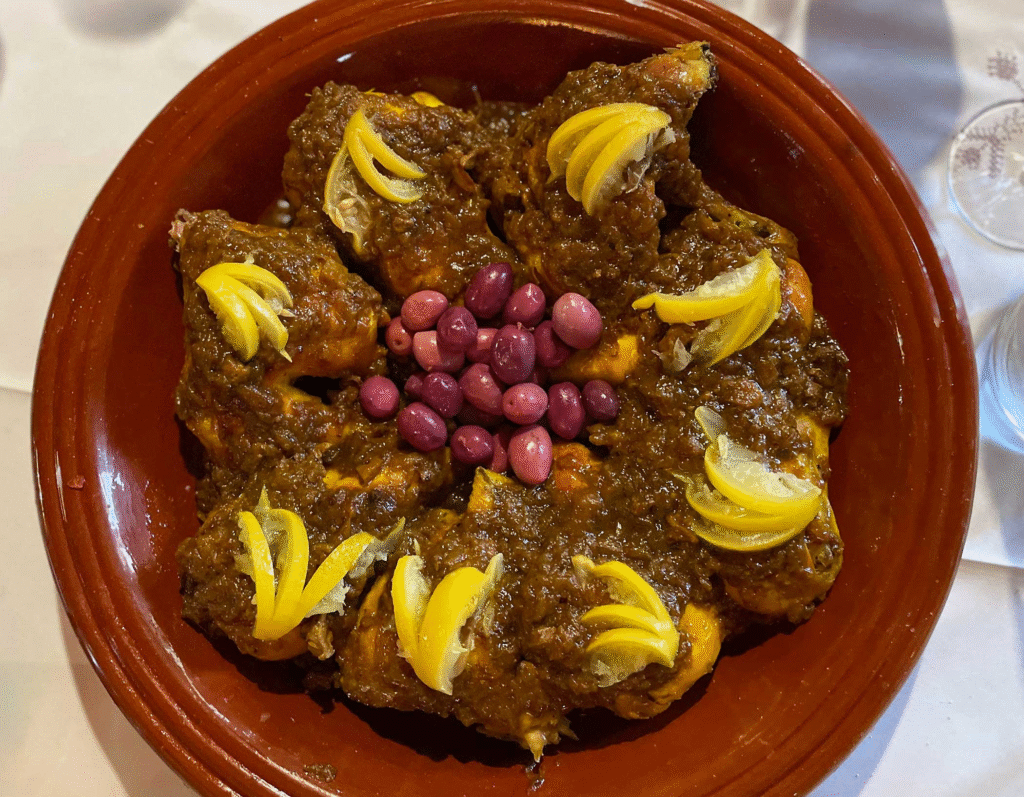
The Therapeutic Tradition
Beyond flavoring, Moroccan spices serve medicinal purposes rooted in traditional Islamic medicine and Berber healing practices. Cinnamon regulates blood sugar, while coriander aids digestion—knowledge passed down through generations of Moroccan mothers and traditional healers.
Regional Culinary Specialties Across Morocco
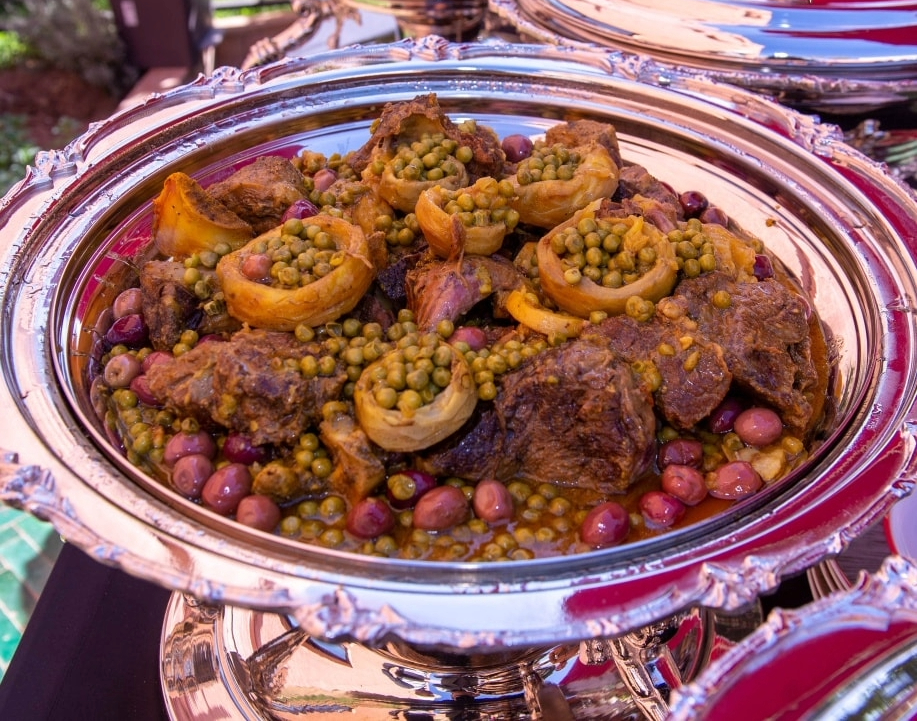
Northern Morocco: Mediterranean Influences
Tangier & Tetouan
- Specialty: Fresh seafood with Spanish influences
- Signature Dish: Seafood pastilla with almonds
- Local Ingredient: Fresh sardines and anchovies
Chefchaouen
- Specialty: Mountain-style tagines with wild herbs
- Signature Dish: Goat cheese with local honey
- Local Ingredient: Fresh mountain herbs and spring water
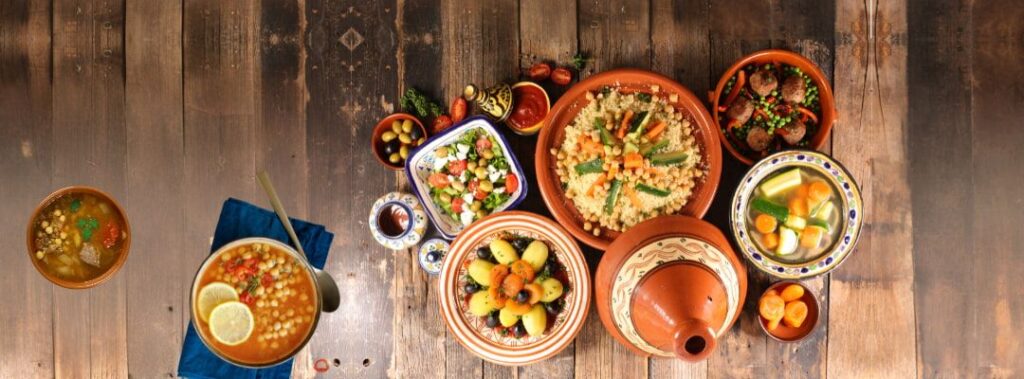
Central Morocco: Imperial Cuisine
Fez: The Culinary Capital
- Specialty: Refined palace cuisine
- Signature Dishes: Chicken pastilla, Khlii (preserved meat)
- Local Ingredient: Fez olives and preserved lemons
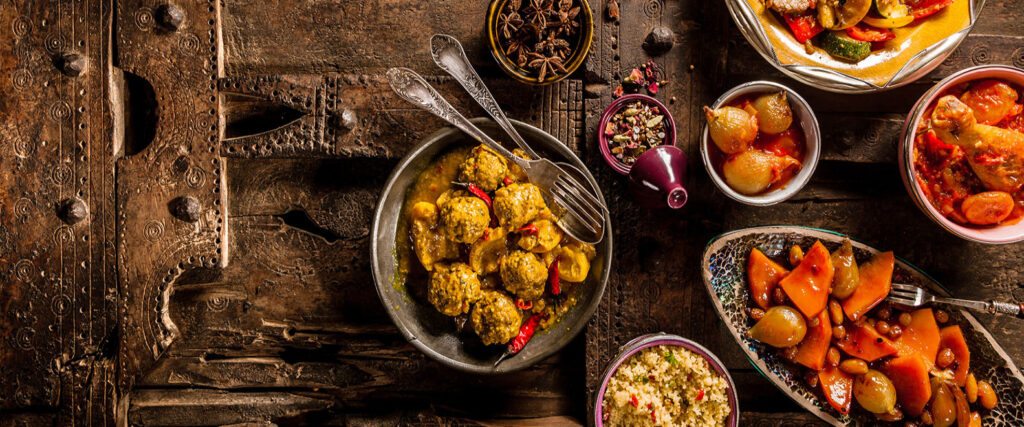
Meknes: Agricultural Abundance
- Specialty: Fresh produce and wine country influences
- Signature Dish: Couscous with seven vegetables
- Local Ingredient: Fresh vegetables and legumes
Southern Morocco: Desert & Coastal Fusion
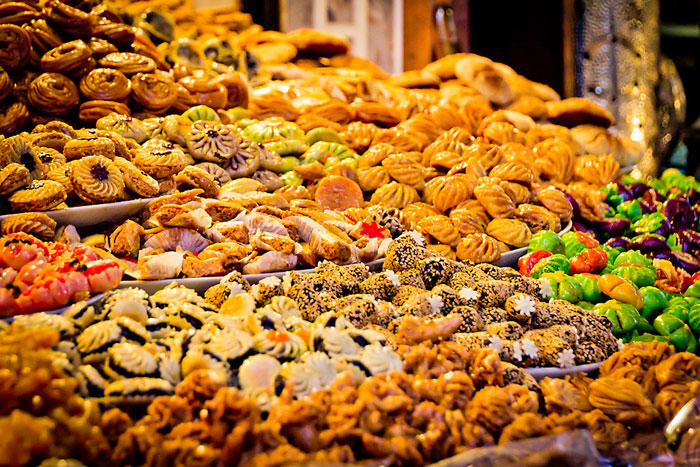
Marrakech: Spice Route Heritage
- Specialty: Bold, spicy flavors
- Signature Dish: Tanjia (slow-cooked meat pot)
- Experience: Jemaa el-Fnaa food stalls transform into outdoor restaurants at sunset
Agadir: Argan Oil Capital
- Specialty: Argan-based dishes and sweets
- Signature Dish: Amlou (Moroccan “Nutella” with argan oil, honey, and almonds)
- Local Ingredient: Pure argan oil and coastal honey varieties
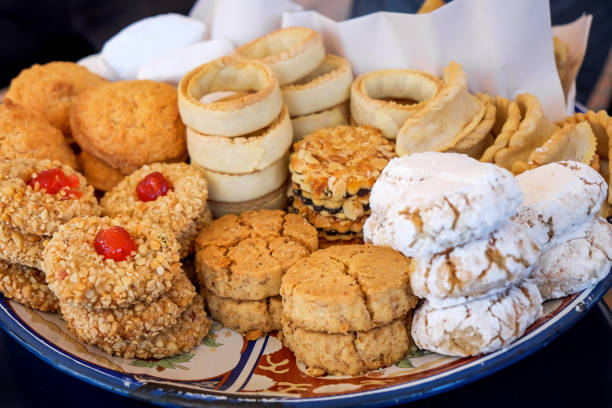
Sahara Region: Nomadic Traditions
Desert Cuisine Characteristics
- Preservation Techniques: Salt-curing, drying, and fermentation
- Signature Dishes: Berber bread, dried meat preparations
- Cultural Element: Communal cooking around campfires
Moroccan Food Culture: Traditions and Social Customs

The Art of Moroccan Hospitality
Moroccan food culture extends far beyond ingredients and recipes—it embodies the nation’s legendary hospitality. Refusing food or drink from a Moroccan host is considered impolite, as sharing meals represents friendship, respect, and community bonding.
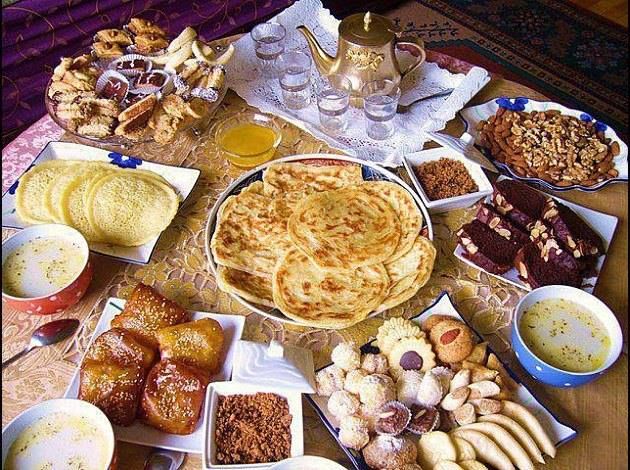
Traditional Meal Structure
Breakfast (Ftour):
- Fresh bread with olive oil and honey
- Mint tea (Atay) ceremony
- Seasonal fruits and nuts
Lunch (Ghda):
- Main meal of the day
- Often features tagine or couscous
- Shared family gathering
Dinner (Asha):
- Lighter than lunch
- Soups (especially Harira)
- Pastries and tea
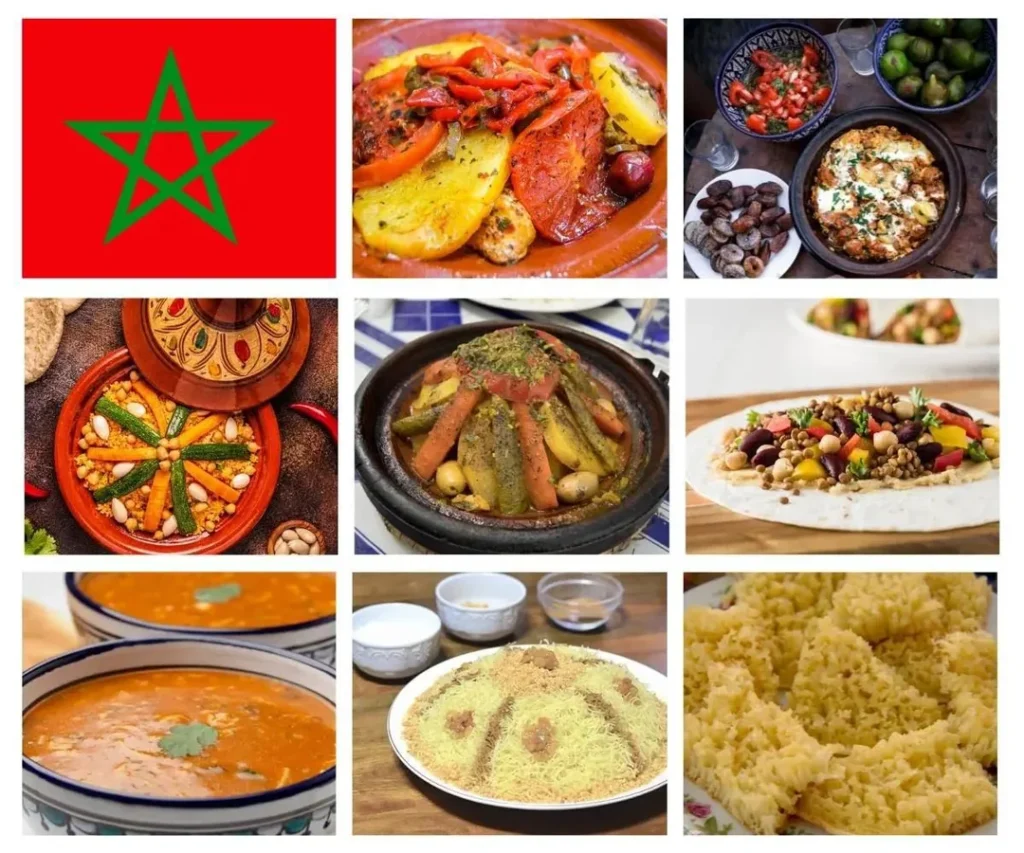
The Sacred Tea Ceremony
The Moroccan tea ceremony represents hospitality, friendship, and social bonding. Traditional mint tea (Atay) preparation involves three glasses per person, each with distinct flavor profiles representing life’s stages: “gentle as life, strong as love, bitter as death.”
Tea Ceremony Etiquette:
- Accept all three glasses offered
- Compliment the tea’s preparation
- Participate in conversation during service
- Understand the ceremony’s spiritual significance
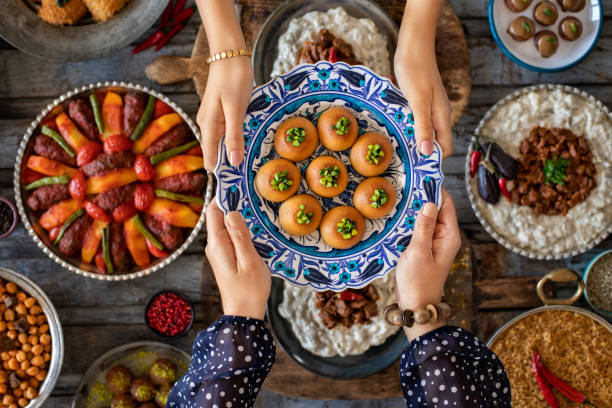
Ramadan Food Traditions
During Ramadan, Moroccan food culture takes on special significance with traditional iftar (fast-breaking) meals featuring:
- Harira soup with dates and honey-soaked sweets
- Chebakia (honey-drenched pastries)
- Fresh fruit juices and milk-based drinks
- Community sharing with neighbors and those in need
Where to Experience Authentic Moroccan Cuisine
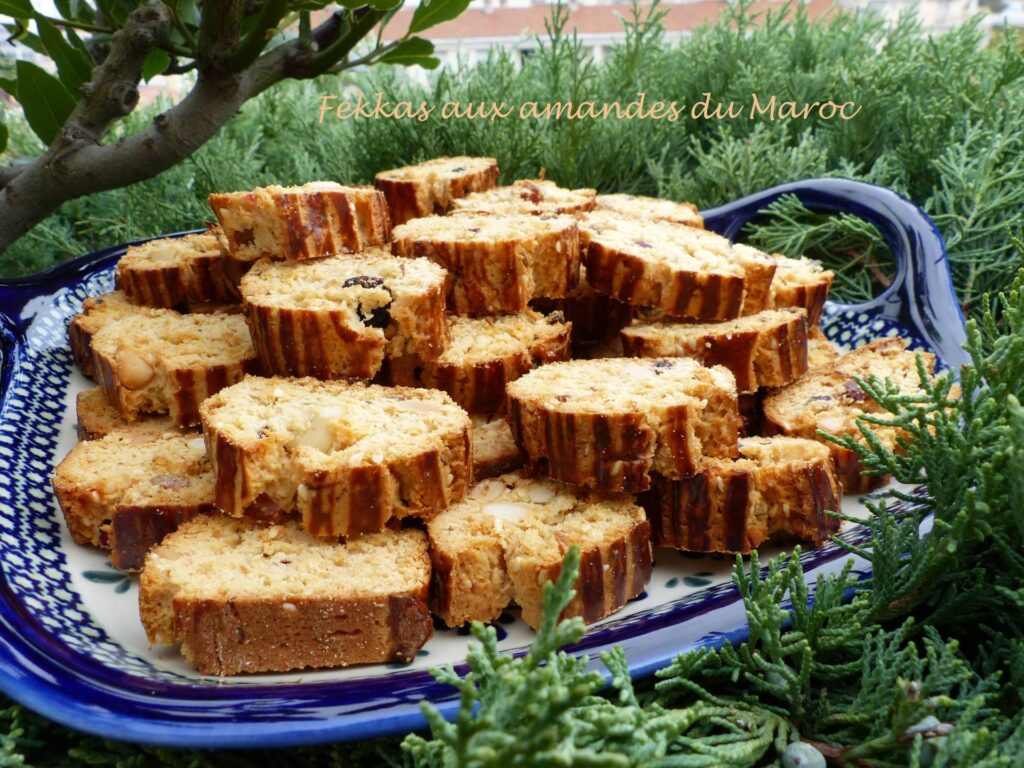
Traditional Settings for Culinary Discovery
Riads: Authentic Home Cooking
Experience Moroccan food culture in traditional riads where family recipes are prepared using time-honored techniques. Many riads offer cooking classes where guests learn to prepare tagines, knead bread, and blend spice mixtures.
Local Markets (Souks)
- Best Times: Early morning for freshest ingredients
- What to Look For: Seasonal produce, fresh spices, traditional bread
- Cultural Experience: Bargaining, tasting, and learning from vendors
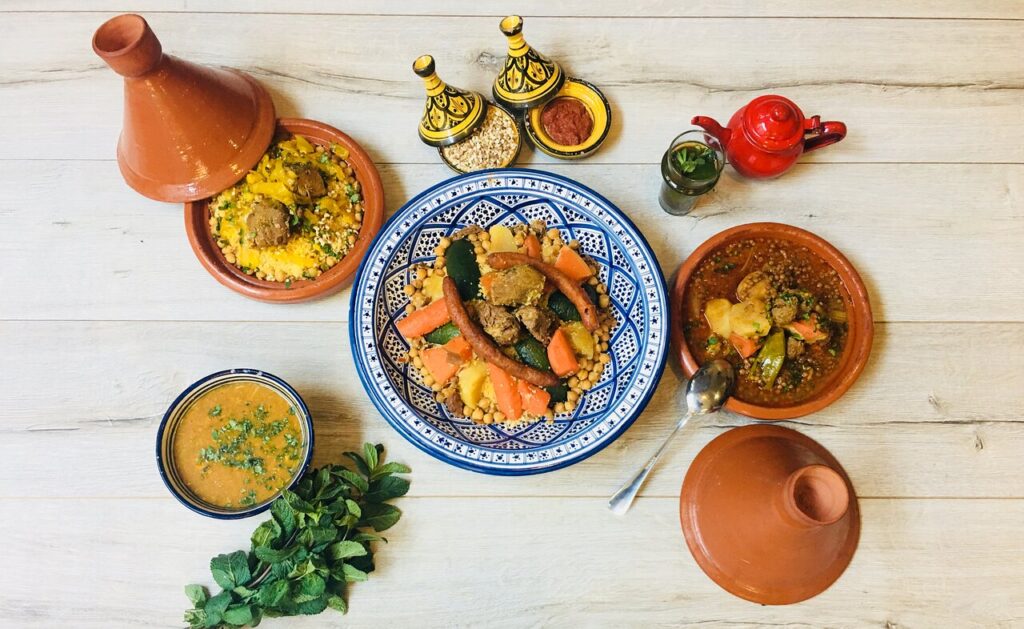
Street Food Adventures
Moroccan street food offers authentic flavors at accessible prices:
- Bissara: Fava bean soup with olive oil
- Maaqouda: Potato fritters with spices
- Fresh Fruit Juices: Orange, pomegranate, and mixed combinations
Recommended Culinary Experiences
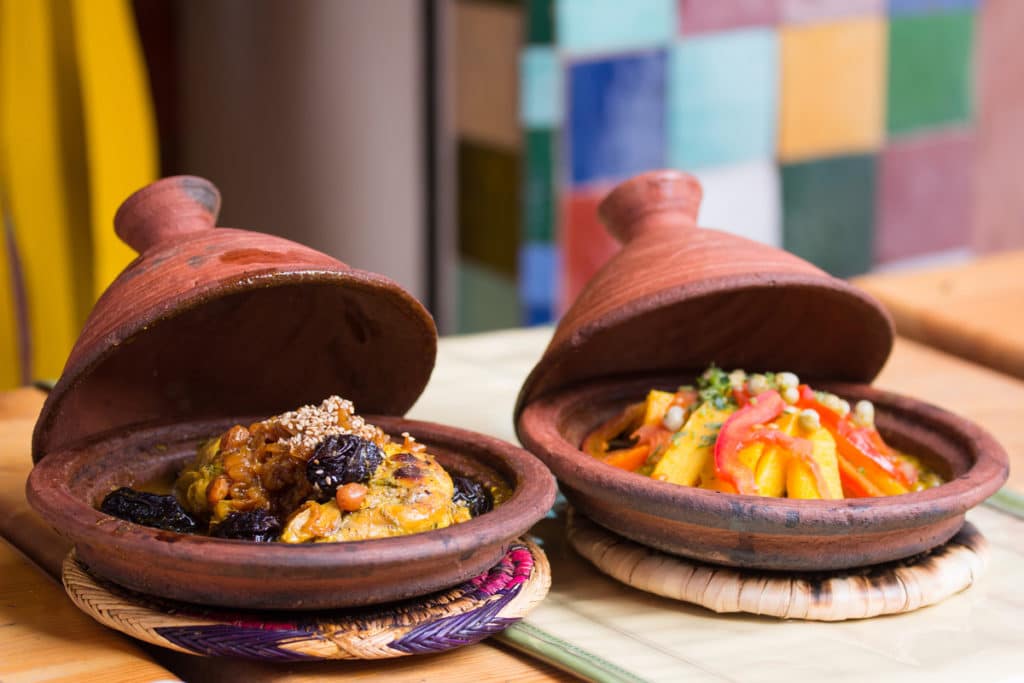
Cooking Classes & Food Tours
- Marrakech: Traditional riad cooking workshops
- Fez: Palace cuisine masterclasses
- Essaouira: Seafood preparation techniques
- Atlas Mountains: Berber cooking traditions
Festival Dining
- Rose Festival (Kelaat M’Gouna): Rose-infused cuisine
- Date Festival (Erfoud): Desert culinary traditions
- Almond Blossom Festival (Tafraoute): Argan oil specialties
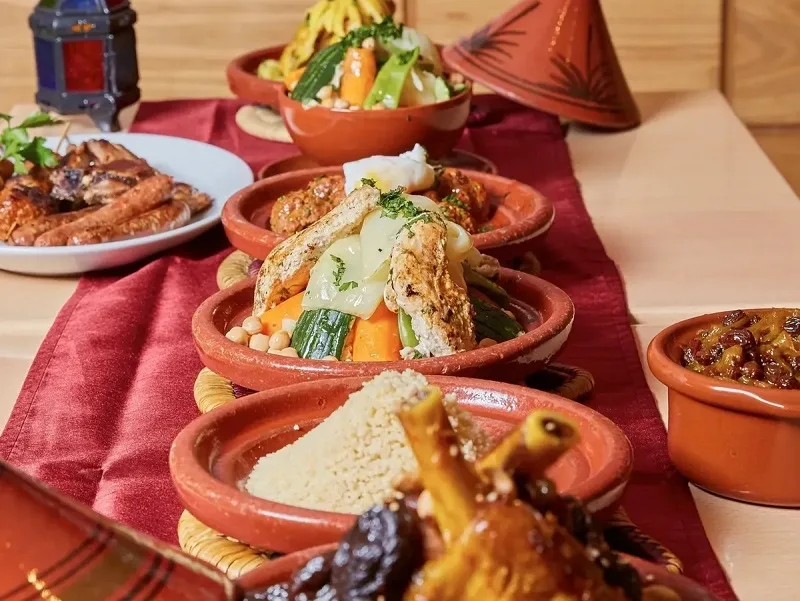
Planning Your Moroccan Culinary Adventure
Essential Food Experiences Checklist
Must-Try Dishes:
- ☐ Traditional tagine in clay pot
- ☐ Friday couscous with family
- ☐ Authentic pastilla (pigeon or chicken)
- ☐ Harira soup during Ramadan
- ☐ Fresh mint tea ceremony
- ☐ Mechoui at celebration
- ☐ Street food in Jemaa el-Fnaa
- ☐ Argan oil tasting in Essaouira
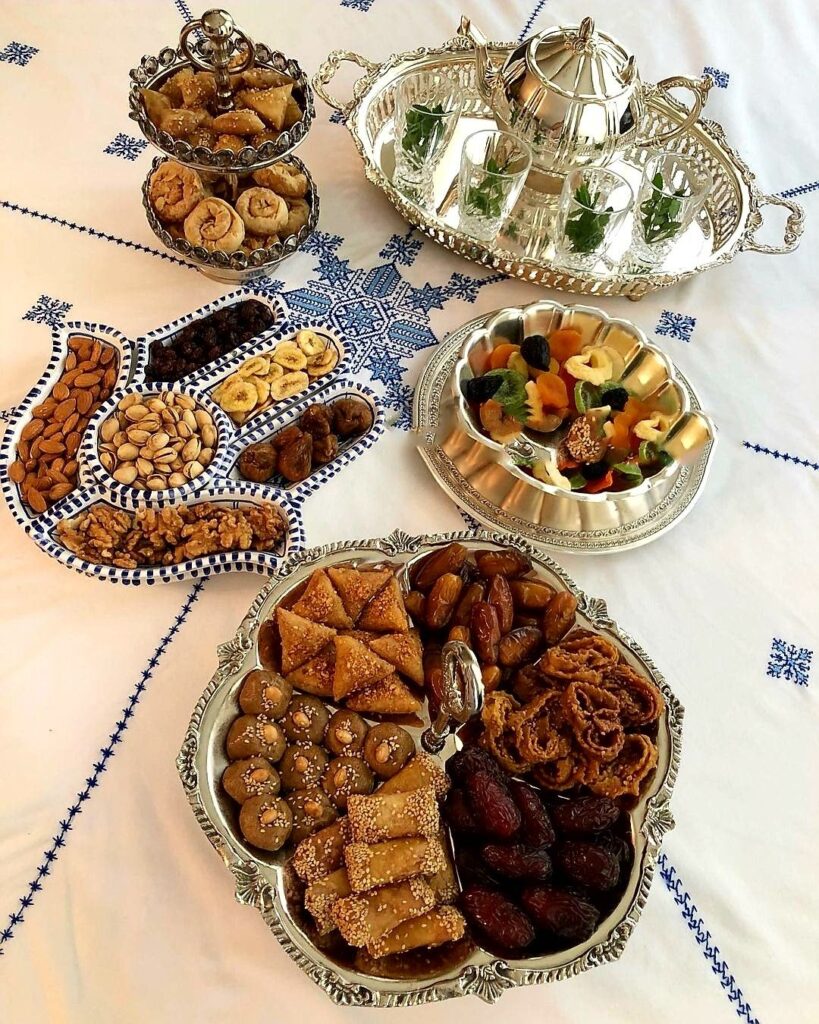
Regional Specialties to Discover:
- ☐ Fez: Khlii and palace pastries
- ☐ Agadir: Amlou and honey varieties
- ☐ Marrakech: Tanjia and spice blends
- ☐ Chefchaouen: Mountain herbs and goat cheese
Practical Culinary Travel Tips
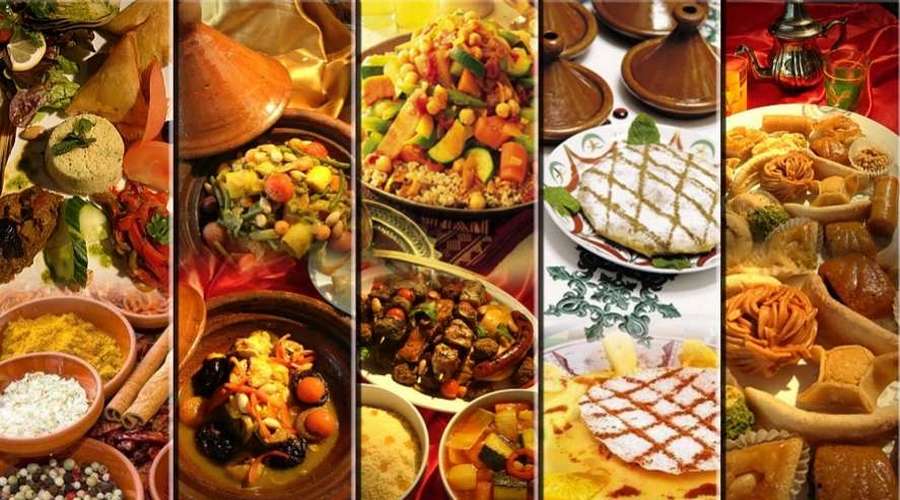
Food Safety Guidelines:
- Choose busy restaurants with high turnover
- Drink bottled water, especially in rural areas
- Eat well-cooked meat and hot foods
- Be cautious with raw vegetables and fruits you can’t peel
Cultural Sensitivity:
- Use your right hand for eating
- Remove shoes when entering traditional homes
- Accept offered hospitality graciously
- Learn basic Arabic food-related phrases
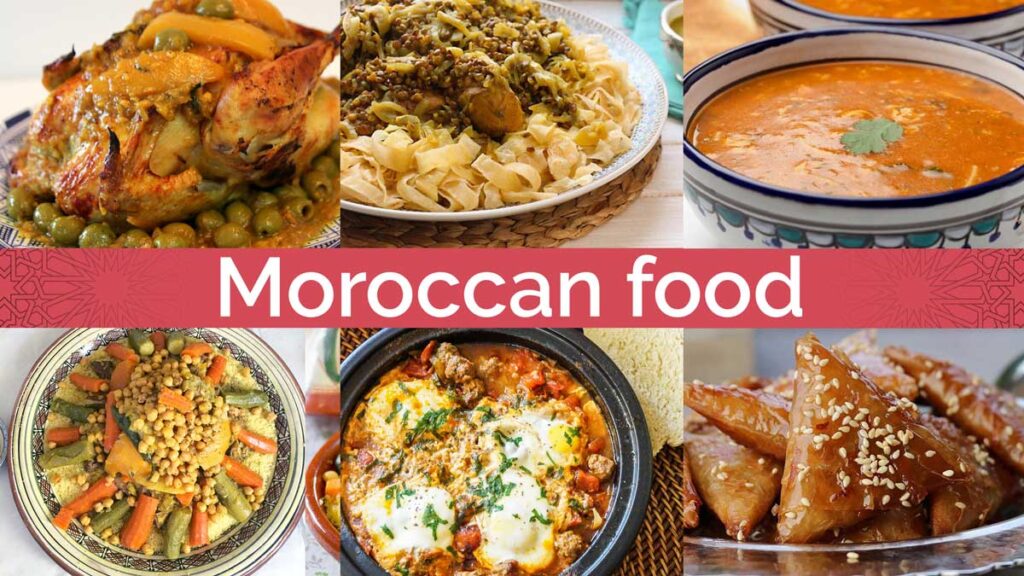
Budget Planning:
- Street Food: $2-5 per meal
- Local Restaurants: $8-15 per meal
- Tourist Restaurants: $20-40 per meal
- Cooking Classes: $30-80 per person
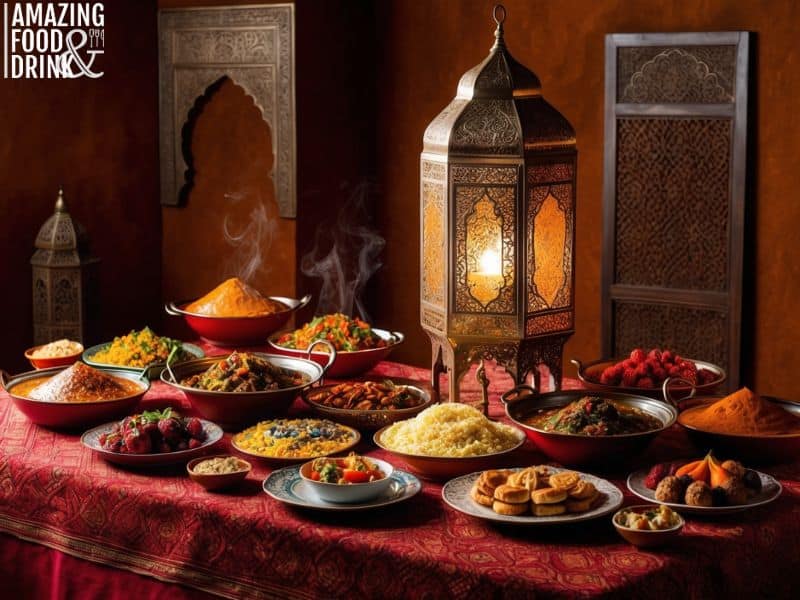
Frequently Asked Questions About Moroccan Food Culture
Is Moroccan food spicy?
Moroccan cuisine emphasizes aromatic spices rather than heat. While dishes are flavorful and complex, they’re generally mild with subtle warmth rather than burning spiciness.
Can vegetarians enjoy Moroccan cuisine?
Absolutely! Morocco offers excellent vegetarian options including vegetable tagines, couscous with seven vegetables, lentil-based dishes, and fresh salads.
What’s the proper etiquette for eating tagine?
Eat with your right hand using bread as a utensil. Take portions from the section directly in front of you, and always compliment the cook.
When is the best time to experience Moroccan food markets?
Early morning (7-9 AM) offers the freshest produce and most authentic market atmosphere, while evening markets in cities like Marrakech provide theatrical dining experiences.
How important is bread in Moroccan culture?
Bread (khobz) is sacred in Moroccan culture. Never waste it, and if dropped, pick it up and touch it to your forehead as a sign of respect.
Embrace Morocco’s Culinary Soul
Moroccan food culture represents more than sustenance—it embodies centuries of tradition, hospitality, and cultural exchange. From the bustling souks of Marrakech to the peaceful mountain villages of the Atlas, every meal tells a story of Morocco’s rich heritage.
Whether you’re savoring your first tagine, participating in a traditional tea ceremony, or learning to prepare couscous with a Moroccan family, you’re experiencing a living culture that has nourished both body and soul for generations.
Share this guide with fellow food lovers and start planning your Moroccan culinary journey today!

